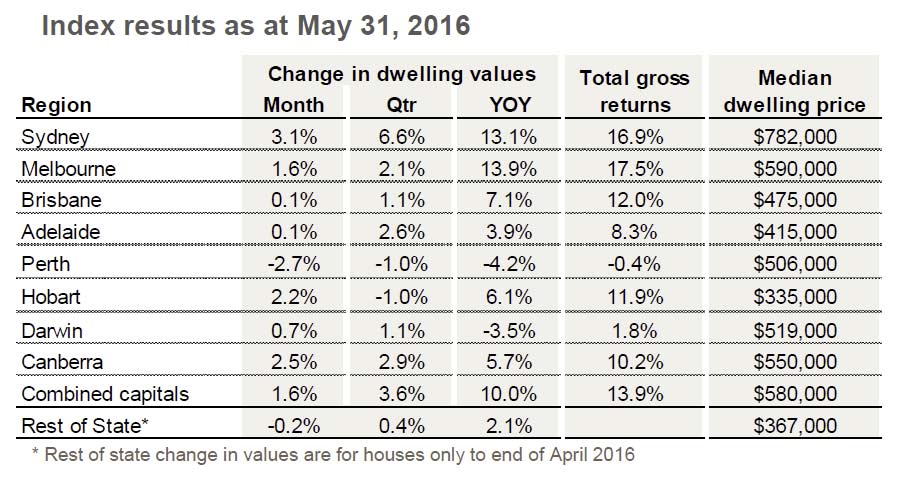The state governments of New South Wales, Victoria and Queensland are all now charging additional tax on foreign investment in residential property. In New South Wales foreign buyers are being charged a 4% stamp duty surcharge from June 21. In Victoria, foreign buyers are charged a 7% tax and in Queensland foreign buyers are being charged a 3% surcharge. All three of these taxes are specifically targeted on transactions of property by foreign buyers.

Property (both residential and non-residential) is already the largest source of taxation revenue for state and local government. These additional charges to foreign investors in the three most populous states will probably raise additional revenue (as long as the higher cost of doing business doesn’t result in a downturn in demand from overseas buyers). For each government there is a benefit in these changes outside of additional revenue, foreigners don’t vote so politically it is likely to be a fairly popular decision. Especially in New South Wales and Victoria where housing affordability is a growing problem and there is a perception that foreign investors are bidding up prices and contributing to locking first home buyers out of the market.

In New South Wales, state and local governments collected $14.705 billion in property taxes over the 2014-15 financial year. Property tax revenue increased by 12.8% over the year and has increased by 80.5% over the decade to 2014-15. Property taxes accounted for 48.5% of total taxation revenue to New South Wales state and local government in 2014-15.

In Victoria, state and local governments collected $12.246 billion in property taxes over the 2014-15 financial year which accounted for 53.1% of total taxation revenue. Property tax revenue increased by 10.7% over the 2014-15 financial year to be 109.9% higher over the past decade.

Queensland property tax revenue increased by 12.6% over the 2014-15 financial year to be 80.7% higher over the decade. Over the 2014-15 financial year Queensland state and local governments collected $8.267 billion in property tax revenue which accounted for 51.5% of total state and local government tax revenue.
Over the decade to June 2015, property taxes have increased by 80.5% in New South Wales, 109.9% in Victoria and 80.7% in Queensland, over the same timeframe inflation has increased by 30.1% which is significantly lower than growth in property taxation.
Given the importance of property tax revenue to state and local governments it is no wonder that the three largest states have decided to increase taxes on foreign investment. These changes don’t impact on voters and they collect additional much needed revenue.
My concern is that it shows that none of these states have any intention of moving away from transactional taxes on property to more efficient land taxes. Keep in mind that in a typical year only around 5% to 7% of residential properties are transacting so you are only collecting stamp duty from a small proportion of the housing market that are deciding to move. When transactions and values slow or fall, stamp duty revenue is also susceptible to large declines.

In New South Wales and Victoria, governments are gaining substantial revenue from stamp duty as property values and transactions rise. In New South Wales, stamp duty collection rose 22.2% in 2014-15, in Victoria it rose by 18.9% and in Queensland it was 12.3% higher. Over the past decade, the total increase in stamp duty revenue has been recorded at: 125.1% in New South Wales, 116.8% in Victoria and 56.1% in Queensland.
Some of the commentary around the increases in tax have been around the fact that without foreign investors many of the new housing (particularly unit) projects would never have even commenced construction. To me, this is really the crux of the problem. As the resource investment boom has faded to some extent housing construction has helped to fill the void. If a projects viability is totally dependent on foreign demand, to me that suggests that it is not really a viable project. The reality is that the current home value growth phase has now been running for four years and new housing construction and unit construction in particular has hit record highs. Foreign investment has increased quite significantly over this time however, many of these purchasers are buying units which many locals wouldn’t purchase due to the size, location and price of these properties. Furthermore, anecdotally many of these properties don’t actually create additional housing because they are left empty and not made available for rent.
I believe that these additional charges will provide some deterrent for foreign buyers investing as the costs continue to add up with FIRB application fees and now these additional charges. Of course, while these changes may deter some investors other will just see it as a cost of doing business and it shouldn’t impact them too much if they are investing for the long-term. If fewer foreign investors results in some new housing projects not going ahead, that is not necessarily a problem either in light of the fact that housing supply has increased dramatically over recent years and will continue to do so over the coming years given the housing currently under construction. Finally if it means that certain developers decide to rotate their offering away from one catering to foreign buyers and towards one which is more palatable to a local market, I believe that is a good thing.
Ultimately these changes may deter some foreign investment but these changes are not going to scare off all foreigners from investing in housing market. At the same time it will raise much needed revenue for these governments. If state governments are looking at taxes on property I would once again call on them to look for a way to move away from stamp duty to a more efficient land tax.











